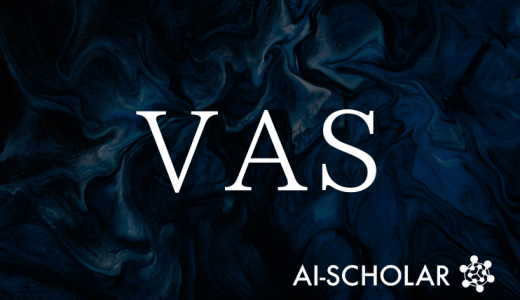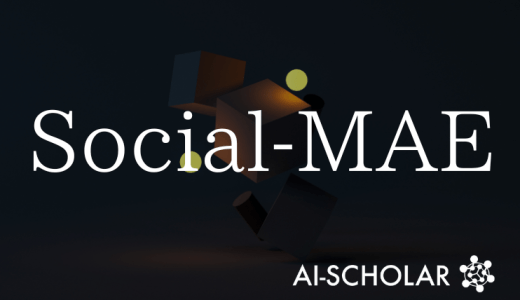
Insight-V: A New Strategy For Multimodal Reasoning Connecting Vision And Thought
3 main points
✔️ We proposed a method to explore visual inference of long chains using a multimodal large-scale language model.
✔️ A novel approach to complex inference problems is attempted using a combination of Chain of Thought and reinforcement learning.
✔️ The new model is able to process more complex visual information than previous models and shows improved performance in multi-step inference tasks.
Insight-V: Exploring Long-Chain Visual Reasoning with Multimodal Large Language Models
written by Yuhao Dong, Zuyan Liu, Hai-Long Sun, Jingkang Yang, Winston Hu, Yongming Rao, Ziwei Liu
(Submitted on 21 Nov 2024 (v1), last revised 2 May 2025 (this version, v2))
Comments: Published on arxiv.
Subjects: Computer Vision and Pattern Recognition (cs.CV)
code:

The images used in this article are from the paper, the introductory slides, or were created based on them.
Summary
This paper describes a system called Insight-V. This system explores new ways to perform complex chained thinking with LLMs that can handle a variety of modalities. Modern LLMs have many potential capabilities, and this paper examines approaches to further enhance those capabilities.
Specifically, Insight-V uses "Chain-of-Thought" prompts and reinforcement learning to enable complex inferences that integrate linguistic and visual information. This approach allows for efficient processing of general inference tasks and more complex inference chains.
The design of the model specifically focuses on the cooperative behavior of multiple agents, which enhances the efficiency of inference. It also shows how communication between agents can be enhanced through a detailed analysis of the inference process.
Experimental results confirm that Insight-V performs better on a variety of tasks than existing models. This approach may have implications for the development of future multimodal AI systems.
Research Background
This paper proposes Insight-V, a method for solving complex visual problems using multimodal large-scale language models (LLMs). In recent years, LLMs have become capable of integrating different types of modal data, such as speech, text, and images, to perform sophisticated inference. However, logically processing visual information as long chains remains a challenge.
Therefore, Insight-V introduces a new approach to model design for step-by-step processing of visual information and integration of information from different modalities. The model first analyzes the visual information in detail, and then each module cooperates to generate highly accurate inference results by performing complex inference. Attempts are also being made to optimize model performance using reinforcement learning. This approach is expected to allow the model to work efficiently on richer data sets.
Experimental results show that Insight-V can achieve visual inference with higher accuracy than other methods. Of particular note is its improved ability to answer complex tasks compared to existing methods. This research has the potential to contribute to future advances in multimodal reasoning techniques.
Proposed Method
In this paper, we propose a new system, Insight-V, based on Transformers. This system is designed to efficiently handle complex inference tasks. Insight-V takes a multi-agent approach in which multiple agents cooperate in reasoning, each responsible for a specific task.
During the learning process, we use reinforcement learning to optimize coordination among agents and powerful LLMs to achieve high accuracy inference. In addition, detailed multi-level evaluation is performed to build feedback to improve accuracy at each step.
In addition, Insight-V is tuned to flexibly handle structured and unstructured data for a wide range of applications. With this new approach, we aim to process information quickly and accurately, even when time is limited.
Experiment
This paper describes a new system called Insight-V. This is a system that utilizes LLM with the goal of combining visual and textual information to improve complex long-chain thinking. In particular, it features the introduction of a multi-agent system, whose structure allows for the efficient processing of different modal data (visual, audio, and textual).
The experiment evaluated the system's ability through multiple visual reasoning tasks. Specifically, we tested the system's ability to answer complex questions using chain-of-sorts. Results showed that the system was able to answer questions with greater accuracy than traditional methods and was effective in tasks such as prompt tuning and associative memory.
The impact of training with reinforcement learning was also evaluated: the DPO algorithm was used to enhance the interaction between agents and the internal reasoning process. Experimental results confirmed that models employing reinforcement learning further improved inferential capabilities and overall performance.
Thus, Insight-V is a system that skillfully integrates visual and textual data and has multidimensional information processing capabilities. This enables even more advanced inference, and is being looked to as a technological innovation that will expand the possibilities of future LLM.
Summary
This paper proposes a new system, Insight-V, that can effectively summarize information in a time-constrained environment. Chain-of-Thought (CoT). Specifically, the paper describes the design of an evolving model using LLM and a system designed to efficiently perform complex inference processes that combine audio and visual information. The system is characterized by its ability to process information in a hierarchical manner and to make inferences more precise.
In addition, we evaluate how the designed models tackle various tasks and report the results. In particular, we evaluate the effectiveness of different RL algorithms and compare which methods are most effective. In the process, the inferential capabilities of the models are quantitatively measured and a process is presented to enhance the ability of the models to derive optimal solutions.
In conclusion, this study provides a new strategy for models to effectively solve complex inference tasks, resulting in more accurate and efficient information processing. This could have a significant impact on the future development of LLM.
Categories related to this article
- Article
- Image Recognition
- Machine Learning
- Deep Learning
- Reinforcement Learning
- Image Recognition And Analysis
- Language Processing
- Expressive Learning
- Natural Language Processing
- Natural Language Processing
- Neural Network
- Transformer
- Explainable.AI
- Language Generation
- Generative Model
- Few-Shot
- Multi-Agent Reinforcement Learning
- Large Language Models
- Agent Simulation
- Prompting Method
- Computer Vision
- Multiagent Systems
- Multimodal
- Generative AI
- Multiagent
- Chain-of-Thought








